 Home - Products - Download - Mission - Free Tools - Index - Contact - News |
Repeatability: | ||||
|
When a robot can switch between tools it is very important that the each tool come back in exactly the same position as it had when the program was set up for the tool. Kelvin Tool Changer is based on a unique 3 point connecting system ensure that a tool will always come back in exact the same position. This system gives Kelvin Tool Changer an extreme high repeatability and is protected by patent. |
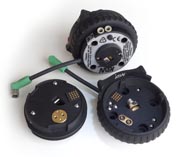
|
|||
Kinematic coupler: | ||||
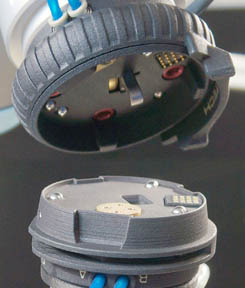
|
The unique connecting system in the tool changer is based on a
kinematic coupler first described by Lord Kelvin.
When the 3 steel balls on the Tool Part lock into the 6 steel balls in the Master Plate this coupling design gives the Kelvin Tool Changer has an extreme high repeatability. Kelvin kinematic coupler is often used in wafer production where the wafers have to maintain extremely high position repeatability when moved from one process to another. Kinematic coupler is also known from optic test benches where mirrors and lenses are mounted with a kinematic coupler. This allows these components to be removed and replaced without losing the precision in a delicate experiment. |
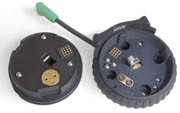
More information: Kinematic Coupling for Precision Fixturing & Assembly by Precision Engineering Research Group, MIT |
||
Kelvin constrain: | ||||
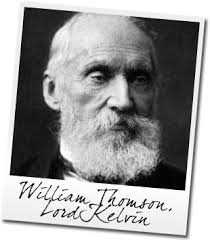 Lord Kelvin |
This kinematic coupler was first time described by Lord Kelvin and is often called a
Kelvin coupler.
The key point is that each of the 6 contact points locks a degree of freedom. All 3 directions in the position and all 3 rotations in the pose are locked by one and only one constrain. None of the parameters are overdefended by and the connection will automatically find the right fit. Lord Kelvin is probably more known for the temperature scale where absolute zero was set as zero. This tool changer is based on this smart coupling principle and it is also why the device got the name: "Kelvin Tool Changer" |
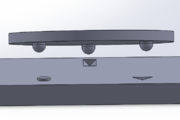 More information from Wikipedia |
||
| Last update: 9/11 2020 | Cookie Free | Follow us on LinkedIN | © 2020 Copyright by 4TECH Robotics ApS. All Rights Reserved |